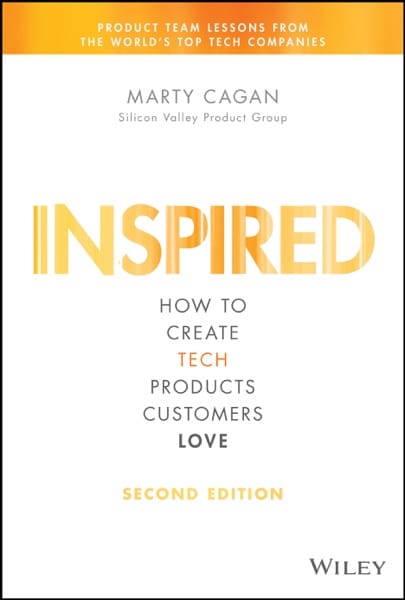Inspired

Summary
"Inspired" by Marty Cagan challenges the traditional approach to software development, emphasizing a user-centric and team-driven methodology. Instead of focusing solely on building features, Cagan argues for prioritizing the understanding and resolution of real user problems. This shift in focus necessitates a deep understanding of user needs, achieved through thorough user research and continuous feedback gathering.
The book highlights the critical role of strong product leadership, emphasizing the importance of product managers as visionaries who define the product strategy, guide cross-functional teams, and champion user needs throughout the development process. Cagan advocates for building and empowering cross-functional teams that work collaboratively, share ownership, and continuously learn and adapt. These teams, comprised of product managers, designers, and engineers, are empowered to make decisions and iterate rapidly based on user feedback.
The book provides a practical framework for building successful products, covering key aspects such as product strategy, user research, product roadmapping, agile development methodologies, and scaling product management within an organization. By focusing on user needs, empowering teams, and embracing a culture of continuous learning, companies can increase their chances of building products that users love and that achieve significant business success.
Key Takeaways
Focus on Solving Problems, Not Building Features:
- Don't just add features for the sake of it. Dig deep to understand the real problems your users face and build solutions that truly address those needs.
- Constantly ask "Why?" to uncover the underlying motivations and frustrations of your users.
Empower Product Leaders:
- Product Managers set the direction, guide the strategy, and relentlessly advocate for the user's needs.
- They're not just spec writers, they're leaders who drive the entire product discovery process.
Build High-Performing Teams:
- Bring together the right mix of skills – product, design, and engineering – and empower them to work together seamlessly.
- Foster a collaborative environment where everyone feels ownership and responsibility for the product's success.
Talk to Your Users:
- Don't rely on assumptions. Get out there and talk to your users directly.
- Conduct user interviews, surveys, and usability tests to truly understand their needs and behaviors.
Define a Clear Product Vision:
- Where are you going? What impact do you want to make?
- Clearly articulate your vision and how your product will achieve it.
- Understand your target market and how you'll differentiate yourself from the competition.
Prioritize Ruthlessly:
- Not every feature is created equal.
- Prioritize based on user value, business impact, and feasibility.
- Create a roadmap that guides development and keeps everyone aligned.
Embrace Agility:
- The world changes fast.
- Be flexible, iterate quickly, and continuously gather feedback to improve your product.
- Don't be afraid to pivot when needed.
Walk in Your Users' Shoes:
- Go beyond data and truly understand the user's experience.
- Empathize with your users' frustrations and celebrate their successes.
Learn and Adapt:
- Encourage experimentation, embrace failure as a learning opportunity, and constantly refine your approach.
- Create a culture where learning and improvement are valued above all else.
Build a Sustainable Product Organization:
- As your company grows, establish clear roles, responsibilities, and processes for product management.
- Invest in the growth of your product leaders.
- Cultivate a culture that attracts and retains top talent.
